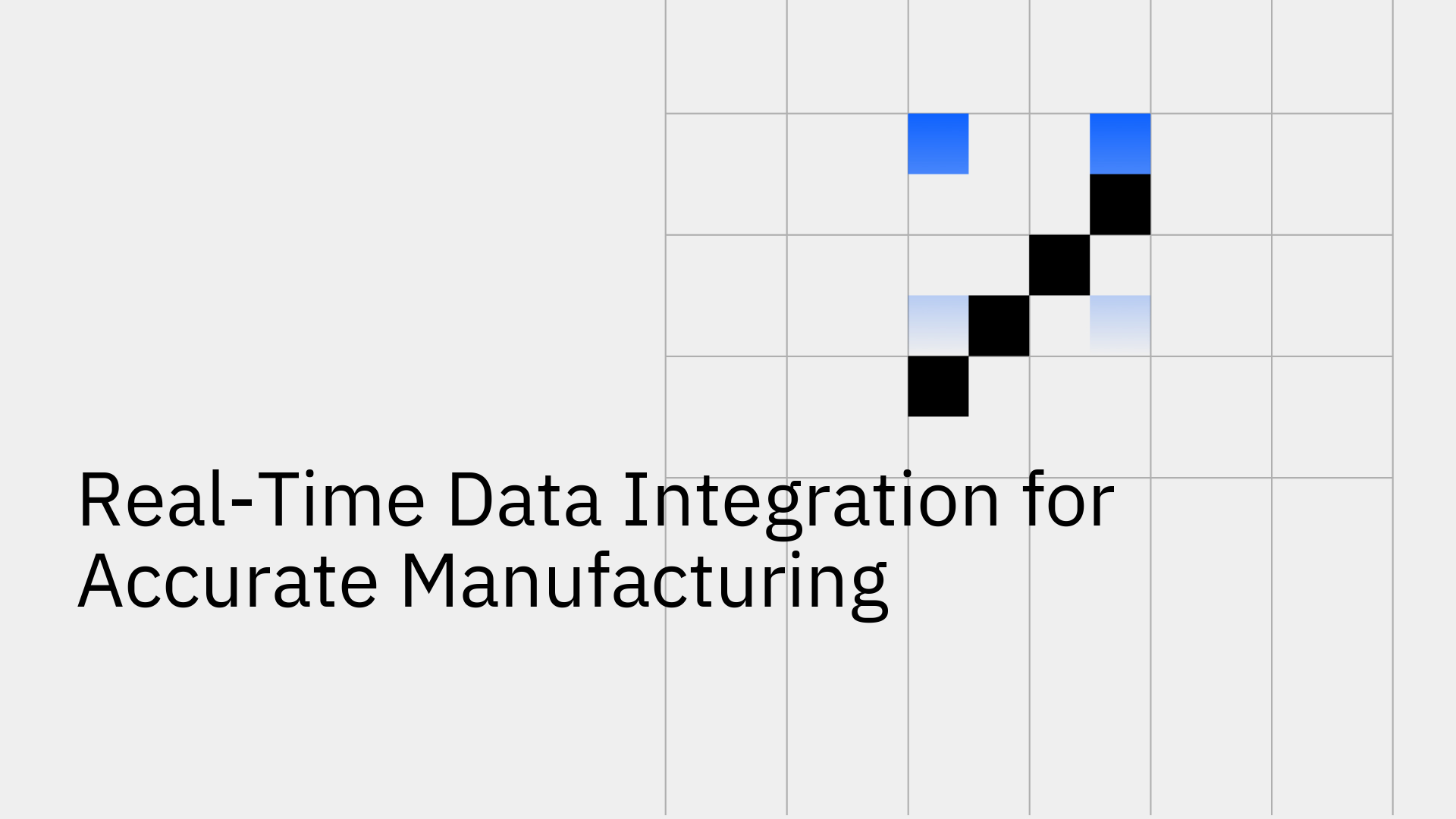
In modern manufacturing, one of the biggest hurdles to efficiency is data silos. Critical information about production, inventory, and quality is often trapped in disconnected systems like Enterprise Resource Planning (ERP), Manufacturing Execution Systems (MES), and Quality Management Systems (QMS).
This fragmentation leads to operational blind spots, inaccurate data, production delays, and inefficient decision-making. Real-time data integration is the essential solution for breaking down these barriers, creating a unified and responsive manufacturing environment. Platforms like Stacksync are purpose-built to solve this exact problem, ensuring accuracy from the shop floor to the top floor.
A data silo in manufacturing occurs when information is stored in one system but isn't easily accessible to others. For example, your ERP system may not communicate with your MES, supply chain management tools, or the IoT sensors on your factory floor.
This lack of communication has significant negative consequences:
Without a unified view of operations, manufacturers risk making decisions based on outdated or incomplete information, quickly falling behind competitors who leverage integrated data [1]. While the benefits are clear, the complexity of integrating diverse and often legacy systems remains a significant challenge for many organizations [2].
Real-time integration is the process of consolidating data from all operational systems into a single, cohesive view. This creates a "single source of truth" for the entire organization, providing clarity from the production line to the executive suite [3]. Thanks to advancements like affordable IoT sensors and powerful cloud computing, this level of insight is more accessible than ever before [4].
Key benefits for manufacturers include:
Manufacturers often rely on a mix of specialized systems, from modern cloud applications to legacy on-premise software. The challenge is making them all work together. Stacksync is engineered to connect these disparate platforms without requiring a complete system overhaul.
Our platform provides Real-Time Data Integration for the Manufacturing Industry by integrating with leading ERP, MES, inventory, quality management, and IoT platforms. Whether you use standard software or have custom-built solutions, Stacksync supports both standard and custom data objects, offering the flexibility to create a truly unified data environment. By connecting systems, you can enable more advanced operational applications and empower teams with the data they need [6].
Two-way, real-time synchronization means that when a piece of data is updated in one system—like an inventory count in your ERP—it is instantly and automatically updated everywhere else. This simple but powerful capability eliminates the need for manual data entry, drastically reduces errors, and ensures every team is working with the most current information.
With Stacksync's Real-Time Speed engine, you can eliminate data lag and move from reactive problem-solving to proactive, data-driven decision-making. This is crucial in an industry where 83% of manufacturers say digital data capabilities are essential for success [7]. When your teams have instant access to accurate data, they can respond to factory floor issues immediately, not after the shift ends.
Traditional integration projects are known for being long, complex, and expensive. Stacksync addresses this head-on with a no-code setup and over 200 pre-built connectors that allow for rapid deployment. A full, robust integration can be configured and launched in days, not months.
This simplicity doesn't come at the expense of performance. Stacksync is built for high-volume, high-frequency data synchronization and backed by enterprise-grade security, including SOC 2 and GDPR compliance. This ensures our platform is secure and scalable for large manufacturing operations, giving you a reliable data backbone you can trust.
Adopting real-time data integration is more straightforward than you might think. Here’s a simple roadmap to guide you.
For a deeper dive, a manufacturer's guide can help you identify high-impact applications for real-time data and follow a clear implementation plan [8].
Stacksync is purpose-built to meet the criteria for an ideal manufacturing data integration solution. Its two-way, real-time architecture, no-code setup, and robust security features make it one of the Best 2025 Data Integration Solutions for manufacturers who need to balance speed with simplicity. Our platform simplifies data integration for modern teams, empowering you to focus on innovation, not infrastructure.
In today's competitive landscape, real-time data integration is no longer a luxury, it's a necessity. By breaking down data silos, you can unlock significant improvements in efficiency, boost product quality, and enable more agile decision-making across your entire operation.
It's time to move beyond fragmented data and embrace a unified operational view. Stacksync is the partner that can help you achieve this transformation.
To see how real-time data sync can modernize your factory floor, explore the Stacksync | Data Sync & Workflow Automation Platform and discover a better way to connect your data.